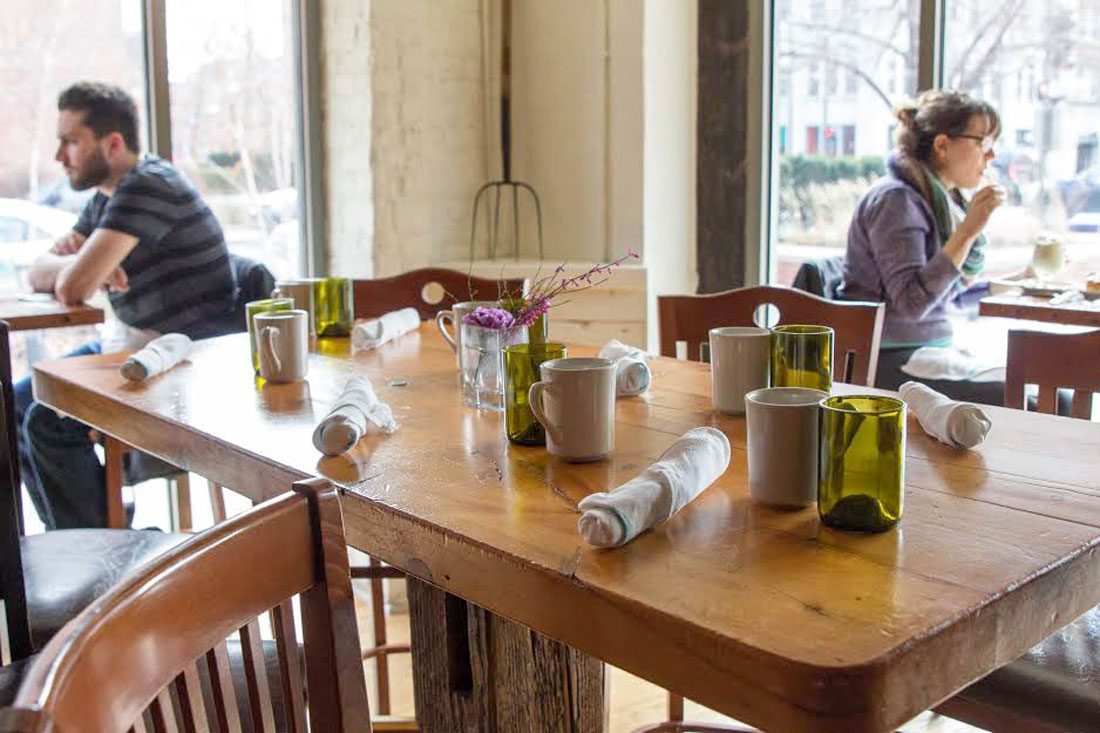By Karin Vandraiss
Restaurant Week, the annual winter event that offers Chicagoans the chance to eat at top-flight restaurants at relatively low prices, opens Jan. 30. But the imbalance between North Side (and north suburban) restaurants and South Side eateries is hard to ignore.
Since its launch in 2008, Chicago Restaurant Week has grown exponentially, from 44 restaurants to over 300 listed in this year’s lineup. Of those 300, however, barely two dozen are on the South Side or southern suburbs.
Choose Chicago, the city’s official sales and marketing organization, advertises Chicago Restaurant Week as an opportunity for both visitors and locals to enjoy the city’s “rich, culinary diversity… all across the city and suburbs.” It is also a way to drive traffic to participating restaurants during the winter months when business typically slows. While the week’s culinary offerings may be diverse, “all across the city and suburbs” is a bit of a stretch.
Jason Hammel, owner of Nightwood Restaurant, 2118 South Halsted St. in Pilsen, participates in order to open his restaurant to “people who might not come in the rest of the year.”
“If you look at the sheer number of restaurants, there are a lot on the North Side,” Hammel said. “Restaurant Week also caters to a specific type of restaurant, nicer than casual, and people associate that type of restaurant with the North Side. But there are a lot of South Side options; the area is really exploding.”
The cost of doing business
But financially, Restaurant Week can be a burden, he said. “The economics can be tricky. We’re already running on a tight profit margin, and I think some people don’t want to discount their product for that amount of time.” All Restaurant Week, menus are prix fixe, $22 for lunch, $33- $44 for dinner.
“The substantial fee is also a deterrent,” Hammel added.
Participating restaurants must first register as partners of Choose Chicago, which offers three tiers of membership packages with annual fees ranging from $99- $699. There’s an additional $500 fee for participating in Restaurant Week itself (discounted to $350 for second- and third-tier partners). It costs restaurants a minimum of $600 to participate in Restaurant Week, not including indirect costs.
Communication issues
Another issue may simply be one of communication, or lack thereof. But some think it’s up to the restaurant, not Choose Chicago, to reach out.
Hammel said he’s “comfortable with (Choose Chicago’s) efforts. There’s a responsibility for us to get our foot in the door.”
Michael Sutton, general manager of Farmhouse in Evanston, agreed. “As far as what restaurants are featured,” he said, “it’s more up to the restaurants themselves to become a member of Choose Chicago versus Choose Chicago going out and trying to pull restaurants in,” Sutton said. However, restaurants on Chicago’s South Side and in the south suburbs, which are off the beaten path for tourists (and perhaps off Choose Chicago’s radar as well) may have to make an extra effort to get that foot in the door.

Tonya Trice, program manager for special services at the South Shore Chamber of Commerce, would like to encourage more local restaurants to be involved in Chicago’s Restaurant Week. The South Shore’s one participating restaurant is Parrot Cage Restaurant, 7059 S. South Shore Drive, run by students from the Washburne Culinary Institute.
“Of course, it’s not necessarily considered a tourist area, but there is some great food here,” Trice said. “I would like to find a way for our businesses to participate and gain exposure. I want to send something out to our businesses and residents so they can be more aware. Where can I find more information?”
Executive Director of the Hyde Park Chamber of Commerce, Wallace E. Goode, hopes to increase Hyde Park’s presence in future Restaurant Weeks as well. Hyde Park, home of the University of Chicago, is represented by two restaurants this year. He says he’s concerned that many local restaurateurs don’t even know the dates of the event.
“There are 91 eateries in Hyde Park, from Michelin top-rated restaurants to restaurants that have been here for 40 years or more,” he said. “I would love them to be involved. One restaurateur mentioned she just heard about it last week. How are restaurants notified about Restaurant Week?”
Wallace admitted that other factors, like fears about personal safety, may be at play. “People from the North Side are afraid to come south,” he simply said.

The contrast couldn’t be greater between the South Side and many North Side Chicago neighborhoods, like Lincoln Park, which has 21 participating restaurants. The Lincoln Park Chamber of Commerce maintains a close relationship with Choose Chicago, said Padraic Swanton, the Chamber’s communications director. “Our partnership involves everything from promoting Restaurant Week to best practices for promoting the tourism market,” he said.
Swanton didn’t have any theories as the South side’s relative absence at Restaurant Week. “We’re excited that so many of our community members are participating,” he said. “I don’t know why that’s not the same story across the whole city.”
Jordan Engerman, director of partnerships at Choose Chicago, said the organization does their due diligence reaching neighborhoods across the city. “We do a little bit of everything, we communicate via email, directly to restaurateurs, newsletters, phone outreach, social media, etc. We do everything we can to communicate the Restaurant Week promotion.”
He explained that existing partners are their first priority. “We have a large restaurant partnership who we reach out to first because one of the requirements is being a partner… as word gets out we do respond to many restaurants who want to participate, and spend quite a bit of time working with them,” he said.
“We do have people that work with us from Choose Chicago,” said Wallace E. Goode of the Hyde Park Chamber of Commerce, “and we plan to reach out to see how our community can play a bigger role next year.”
Chicago Restaurant Week 2015 begins Jan. 30 and runs through Feb. 12.

